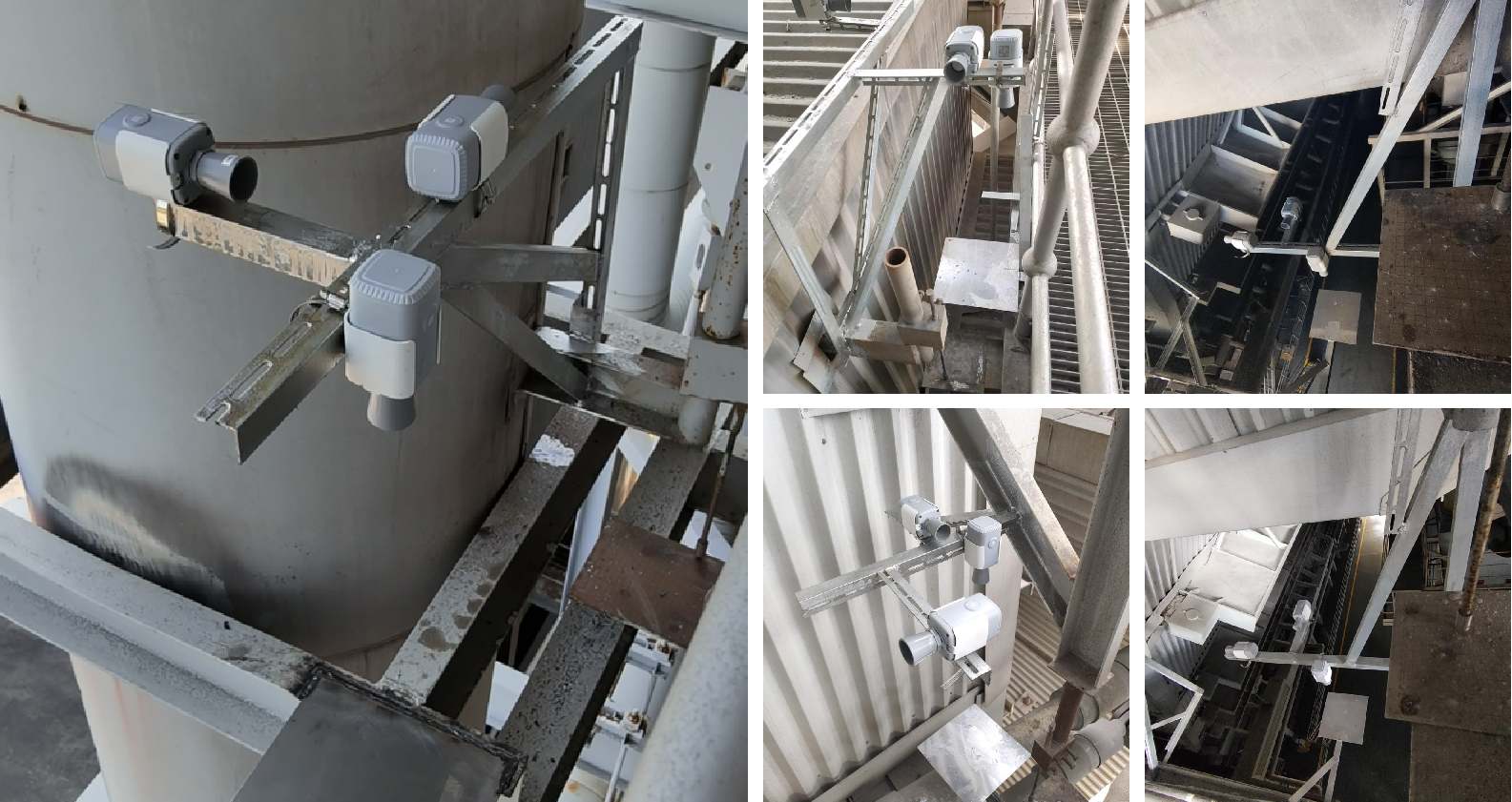As a technology-intensive production plant, thermal power plants are more prone to accidents. Statistics show that boiler problems account for more than 70% of the total accidents in power plants in China, whereas the leakage and blasting accidents caused by super-heater, re-heater, economizer, and water wall are the major problems that plague the safety production in power plants. Therefore, anti-wear and explosion-proof are the foundation to ensure the safe and stable operation of boilers economically. During the production process, the boiler water is gradually heated, vaporized, expanded, the water level rises, then the pressure-bearing components of the boiler absorb the pressure from the steam, and each expansion indicator increases its expansion amount accordingly. In these circumstances, the Milesight ultrasonic distance/level sensor provides precise, non-contact distance measurement to constantly monitor changes in expansion. With the data, we can compare with the pre-configuration of expansion to prevent and eliminate the potential hazards.

Challenges
Many range measurement techniques have been introduced in industrial applications such as lasers, infrared, radio-frequency, and ultrasonic signals. However, in our customer’s plant, they get used to the manual operation by the vernier calipers for expansion measurement. Due to the working environment of the steam boiler, the high temperature, vibration, and pollution are the major challenges to maintaining data precision. Every once in a while, the staff has to re-calibrate or replace the vernier caliper, which creates labor costs and resource wastes as well.
-
- Manual operation with high labor cost
- Low precision and accuracy measurement data
- No timely alert
Project
Thermal energy in Asia remains a major electricity source, with coal-fired power plants in China alone generating almost 75% of electricity. Coal-fired power plants in China are expected to continue to account for the majority of the country’s electricity till 2030.

Zhejiang Taizhou-2 power station is a 2,000-megawatt (MW) coal-fired power plant in Zhejiang Province, China. The Taizhou-2 power station includes two 1,000 MW units and two additional 1,000 MW units in planning.

Solution
It’s necessary to make use of the high technology ultrasonic and LoRaWAN® for running the thermal power plant effectively. Ultrasonic signals are distinguished by their capability to estimate range with a high degree of resolution at a low cost. The LoRaWAN® is well known for its long rand connectivity with low power consumption.
In this steam boiler expansion measurement application, a wireless ultrasonic distance and level monitoring sensor communicate via a LoRaWAN® gateway to the customer’s monitoring center. The sensor uses sound waves to detect objects, so it doesn’t need to come into contact with the materials it is measuring.
The acceptable expansion range of each component is preconfigured in the monitoring platform. Once the value from the ultrasonic distance/level sensor exceeded the allowable range, it will auto send the alert to admin by SMS and Email quickly for on-site repairing.
Once the LoRaWAN® gateway receives the data from the sensors, it’s processed by the gateway embedded network server directly and then forwarded by MQTT to the cloud where the monitoring center is hosted by the customer himself.
The continuous monitoring data can be generated in a unified form in a log or report for all the staff day-by-day work.

Featured Products
- Milesight EM500-UDL Sensor
- Accelerometer Temperature Sensor
- LoRaWAN® Gateway
Deployment
Since the LoRaWAN® network is already available in the customer's plant for data collection, then the ultrasonic distance/level sensors are directly included into their existing infrastructure to expand the LoRaWAN® solution from vibration and temperature monitoring to distance and range monitoring.
The high accuracy design of the ultrasonic distance/level sensor is one reason that Milesight won the bid because it measures up to 10 m, offers 1 mm resolution, and ±1% accuracy.
A boiler is about 12 stories high. The following pictures are taken from four corners of a boiler, and 3 ultrasonic distance/level sensors are fastened firmly by iron frames on each monitoring point. In this project, a total of 108 sensors are distributed on 36 points to realize the all-directional routine monitoring of a boiler. Those sensors can calculate the offset of displacement from the X, Y, and Z-axis of the boiler and keep end-users updated about its expansion coefficient in real-time.

Benefits
Wireless LoRaWAN® communications open up additional benefits including saved time and costs, real-time remote monitoring, and adaptability to meet changing requirements.
- Manpower reduction, labor effectiveness, and efficiency gains;
- Lowered operating costs and non-contact technology for accurate distance/level monitoring
- Most importantly, increase data accuracy of boiler expansion for safety production;
- Timely warning triggered automatically by pre-configuration of expansion distance in the platform;
- More LoRaWAN® sensors can be included in the future;
About Yunkukeji
Hebei Yunku Technology Co., Ltd. is a high-tech software enterprise dedicated to the research, development, consulting, implementation, and service of informatization in the electric power industry.







